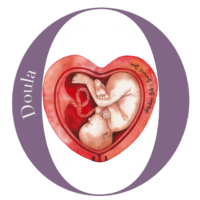Note: For information specific to elective abortion, please click to view this article.
The information provided in this article was contributed by a real mother who experienced this situation. Her bravery in sharing this is in dedication to her two babies born not alive, one born by miscarriage, and the other, by D&X at a clinic. She misses and loves her children dearly.
If your doctor has recommended referring you to a clinic or abortion facility (or to perform elective abortion “induction while the baby is still alive” at their office or hospital) to deliver your baby, the very first thing you need to know is why.
If you have learned that your baby will be born with an adverse diagnosis, special needs, or even life limited diagnosis, and you are overwhelmed with the prospect of facing the difficult task of parenting a child with such certainly or suspected needs, there are support resources to help you make this journey not only more manageable, but even special, joyful, and rewarding. You can visit our page on this subject. Prenatal Partners for Life , Be Not Afraid and Sufficient Grace Ministries (click “Resources”) are just a couple of helpful resources. We also talk about the process of carrying to term at this site. Please visit these resources if your baby’s diagnosis is “incompatible with life”, meaning that after carrying to term, your baby may die at birth. Studies indicate that while babies feel pain in utero, a fatal diagnosis is not intrinsically painful – meaning, the baby would feel pain from external, foreign sources (needles, for example) but based on heart rate and careful monitoring, it is observed that babies do not feel pain from their diagnoses. Their experience in the womb is a peaceful one. You are encouraged to ask your doctor about studying your baby’s heart rate via ultrasound for such indication.
Second, get a second opinion from an OB from a different hospital. This is for your benefit. The added element of doubt that may find you in the journey after this pregnancy can be haunting. It is something felt by mothers of all loss experiences and you can care for yourself by limiting this compounding element of the grief journey now.
Third, consider any alternatives you may have, including waiting for your baby to die on his or her own, at which time your OB may likely have different birth options for you, other than a clinic referral (or “induction while the baby is still alive”).
A clinic or termination referral will be given when:
- your baby has not died yet–but his or her death is imminent, and
- the continued pregnancy is deemed a risk to your health/life.
If this is your situation, you should know:
- This sort of situation is not discussed openly, and so supportive information is very limited.
- This is not a cosmetic or elective abortion (your baby’s prognosis is imminent death).
- Your loved ones may consider this a cosmetic or elective abortion, and may have a very difficult time supporting you.
- Your insurance company may consider this a cosmetic or elective abortion (meaning, you will likely need to cover the entire cost of the labor and delivery without reimbursement)
- For these reasons, parents faced with this situation experience a uniquely compounded grief.
- Because this unique situation is not elective abortion, it might be compared to laparoscopic surgery.
About the process:
- “Elective Abortion” is both, the decision of duration of life in utero and the method in which your baby is guided to cessation of life, plus, the birth of your baby. This complex experience requires your entering into understanding these complexities, and to give yourself permission to identify with each of these and from there, to give yourself permission to shape your feelings, even as those feelings may change, and change again, over time.
- After your doctor suggests a clinic referral, he or she will provide you with the names and locations of clinics that can serve you. You should ask for as many clinic names as you can, so that you can research each of them yourself. This may give you more control, in a time that can seem so totally out of your control.
- Contact with the clinic needs to be made, and may need to be made by you.
- The clinic will need the medical information about your baby (your doctor’s office will fax this over to them).
- If the clinic is out-of-state, you will need to provide your own lodging. You will need to arrange for a hotel stay that corresponds with the timeframe that the clinic will schedule for the delivery of your baby.
- During your phone call with the clinic, they will discuss the cost with you, which may be $5000 or more, and you will generally be expected to pay this in full when you arrive at the clinic. They may also inform you that they will send you reimbursement forms that you can fill out and submit to your insurance company for possible reimbursement.
- During your phone call with the clinic, you should introduce any special requests you have regarding your birth process, and ask about any policies that may prohibit any of your options.
- When you arrive at the clinic, there may be pro-life, anti-abortion “protesters” outside. These people should be kind and concerned and not at all antagonistic or aggressive (although they can be, which can be even more hurtful).
- The clinic receptionist will require you to present a photo ID, fill out their paperwork, and then you will be given information regarding the birth method that your clinic doctor will use (you will only be allowed one support person with you, and that person will only be allowed to be present during discussion with the clinic doctor, not during any part of the process):
Special Requests you might inquire about can include:
- A small audio device with ear buds to listen to music during the procedural portion of the birth process.
- A photo of your baby.
- Leaving a small item with your baby.
- A copy of any ultrasound scan or photocopy of any other imagery (or paperwork) relating to this pregnancy and baby.
- You might wear or bring a special scent that can hold memory of the birth rather than the clinical smells you may encounter during the procedural portion of the birth.
- The inclusion of an SBD Doula who has a moral frame to support with presence during the birth in which a decision of duration of life in utero has been made, either in the birthing room or in the waiting room.
- A chaplain or other spiritual support.
The doctor has different birth methods, and will discuss with you the one that may best fit your unique situation. These methods are:
- artificial induction
- saline injection
- D&E
- D&X
- hysterotomy or Cesarean
- partial birth abortion
These birth methods are generally performed differently at a clinic than at a hospital, so the hospital birth plans available at this website will likely not give you the accurate information you need.
When you are in this initial appointment with the clinic doctor, present your birth plans again. Here is a little information on Artificial Induction, D&E, and D&X birth methods of elective abortion.
Artificial Induction:
You may or may not be given medication that simply tells your baby to stop working.
If your clinic doctor permits you to make the second choice, please know that your baby will die after birth. The timeframe will be discussed with the clinic doctor.
Artificial induction medication, usually Pitocin, is given, and you labor until your baby is born.
D&E (babies approximately 13-22 gestation weeks)
and D&X (babies approximately 23 gestation weeks and older):
The following information pertains to the 3 day process (and, the process may vary). Your clinic doctor will discuss the timeframe and the details for your unique situation.
During the first visit, the doctor administers medication that simply tells your baby to stop working.
Afterward, your clinic doctor will insert seaweed laminaria vaginally to be placed against your cervix. This is very uncomfortable. Finally, after spending approximately 2-3 hours at the clinic, you will be able to leave.
The next morning, you will return to the clinic, where they will remove this first seaweed laminaria (by using forceps), inject medicine into your cervix, and insert seaweed laminaria again. The process in this visit is very painful, and will likely take over an hour.
On the third day, your baby will be born. It is a good idea, at any of these visits, to reiterate your birth plans to the clinic doctor and/or nurse.
Any seaweed laminaria that hadn’t already fallen out will be removed, Pitocin will be administered to artificially induce labor contractions, and, after laboring for several hours, your baby will be delivered.
During the delivery, only the clinic doctor and a clinic nurse will be present with you.
The delivery may involve the use of forceps to help guide your baby out, and may involve surgical equipment (curette or canulla suction) after your baby has been born. Please discuss the possibility of your baby feeling pain or being born alive.
You will likely not be invited to see your baby, and will have to ask (possibly with persistence) to see your baby.
The clinic will likely not permit you to take photographs of your baby.
After the Birth:
- You will be sent home with medications for pain and for blood clotting.
- You may experience (perhaps a small amount of) breastmilk production.
- You will likely have bleeding for at least the first 2 weeks (and up to 6), called lochia.
- You will have a follow-up visit with your primary OB.
How far along are you? The following links give you information about that gestational age, as well as an option to view a baby at that age, and read a story written by another mother who lost her baby at that age. These links open in a new window, so to return to this page, you will need to click back on the tab for this window at the top of your screen.
- 20 weeks
- 21 weeks
- 22 weeks
- (if it’s not listed, please just click on gestational age and scroll down to your baby’s age to learn about what your baby may look like at delivery)
The mother who so generously helped create this article has offered to share her story with you. Please click here to read “My Clinic Birth Experience“.
.
Postpartum & Healing
General
- We have support prior to and during birth.
- Please utilize our after birth support resources.
- Friends & Family can and should bring tangible support to you. Here’s how.
- You can share your story, and read the stories of others.
Elective Abortion Specific
- There is conflicting research on the postpartum emotional journey. While some researchers have found legal elective abortion to be safer than childbirth in “carrying to term,” and that there may not be a substantial and direct relation between elective abortion and postpartum psychological wellness, other researchers have compiled and performed extensive research to the contrary, and believe that data is best understood when collected as many as ten years after the decision and event.
Information on Other Forms of Elective Abortion:
Saline Injection
This method involves a long needle injecting a strong salt solution into the amniotic sac. The salt solution is corrosive and will burn the baby’s delicate skin, and many sections of the skin will be peeled off. The baby immediately swallows the fluid, which burns the interal organs and is considered fatal after approximately an hour after injection. Within 24 hours, labor is expected to begin; your baby may or may not have died prior to delivery, but may be born in extremely critical condition.
Hysterotomy/Cesarean
This birth method involves delivering the baby via Cesarean birth, except that the umbilical cord is cut while the baby remains in the womb, cutting off the oxygen supply to the baby. Sometimes, however, the baby is still born alive.
Parial Birth Abortion
In this birth method, an ultrasound guides the process, ensuring that the baby is delivered in a breech, feet first delivery. The baby’s entire body is born, but while the baby’s head remains just inside the vagina, scissors are bluntly struck against the skull of the baby, and suction is used to remove the baby’s brain.












